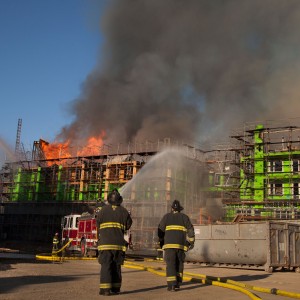In its appeal, T.C. Steel says those findings are the result of confusion involving the account from W-9, whom the company identifies as a veteran welder named Jia Yan. The company says Jia Yan's statements "should not be taken literally" because he speaks a different Chinese dialect from San Francisco police Officer Jason Hui, who interviewed him. The appeal also says that Jia Yan "is easily confused" about matters unrelated to welding "even when spoken to in a language he understands." The appeal attributes the confusion to the fact "his education in reading and writing took place in China over 40 years ago."
According to T.C. Steel, an employee identified as Juan Baros was the crew member designated to perform the fire watch. The company said Baros was trained to wait the standard 30 minutes and fulfilled fire code safety requirements the day of the fire. The company attached an affidavit from Baros that says, “When all hot work ended on March 11, 2014, I stayed on site at 1200 4th Street no less than 30 minutes to ensure that there was no danger of fire.”
T.C Steel emphasized in its appeal that it repeated the fire watch procedure every day of its work on the construction project. In any case, the company stated, it usually takes 30 minutes to pick up tools and equipment after a welding or grinding job is done. “It is unlikely and virtually impossible for T.C. Steel’s workers to leave the job site any sooner than 30 minutes after hot work is complete,” the appeal says.
Officials at the San Francisco City Controller’s Office said they received the appeal and a $1,000 check from T.C. Steel last Thursday. That money is not considered an official payment for the fine. When a fire citation is appealed, the company being fined must send in a check for the entire amount in order to hold a hearing. If the citation is dropped, T.C. Steel would get that money back.
City officials expect the hearing on the appeal to be held later this year.
The Mission Bay fire prompted the city's fire marshal and Department of Building Inspection to warn construction crews about obeying safety rules. The two agencies published an information sheet weeks after the blaze, clarifying fire safety rules. “That was obviously the largest, most dangerous fire the city has seen in quite some time,” building inspection spokesman Bill Strawn told KQED. “We want the contractors and actual workers who are involved to pay very careful attention to what they are doing."
The rules require crews, among other things, to designate a specific worker to keep an eye out for smoldering embers after work wraps up. Fire Department spokeswoman Lt. Mindy Talmadge said the devastation from the Mission Bay fire “shows (construction crews) what can happen and hopefully be a motivator to maintain the conditions of the permit.”
The “hot work” rules for construction jobs like welding and grinding that involve “high-temperature devices” are laid out in the International Building Code. Those same rules were adopted by California’s building code. They require crews to use insulating blankets, keep work areas free of “combustibles”, and maintain fire prevention protocols that can help workers detect and suppress any possible fires, like keeping an extinguisher nearby and maintaining fire watches.
Experts say it’s difficult for fire officials to inspect the majority of construction sites to ensure that those “hot work” rules are followed. In many cases, fire departments rely on the private sector to ensure crews are abiding by the safety codes, said David Rich, a principal at Reax Engineering, a Berkeley-based consulting firm made up of combustion and fire scientists, specializing in fire safety design and code consulting. “I think they need the construction crews and their supervisors to take responsibility for these procedures,” Rich said in an interview.
Rich said the updated information sheet on hot work issued by fire and building inspection officials to construction crews represents a new step taken by city officials to create a stronger fire safety system in San Francisco on the heels of the Mission Bay Fire.
“Big fires result in change,” Rich said. “They identified some areas that really needed explaining to the owners, developers and contractors and they wanted to be crystal-clear about this,” he said.
